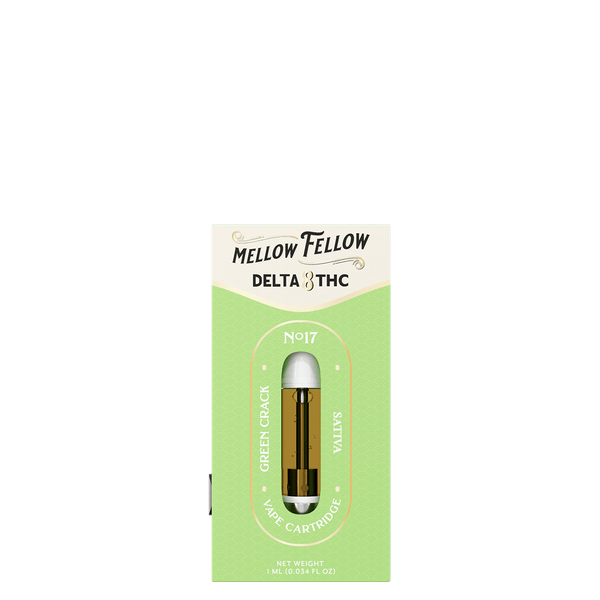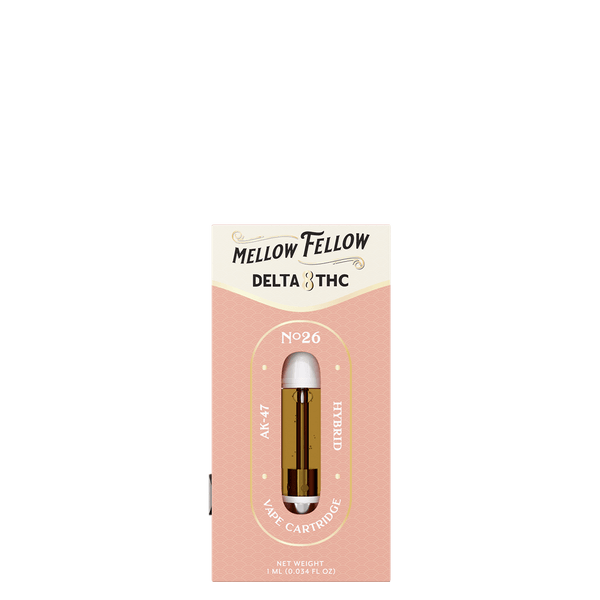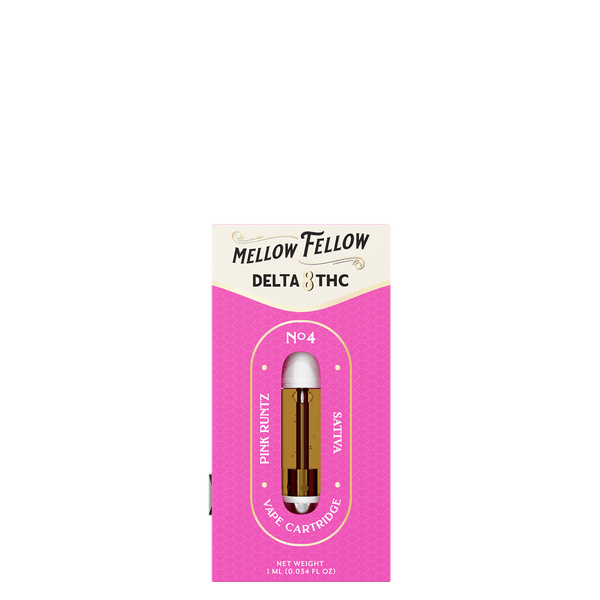Do Carts Stay In Your System Longer Than Flower?

Whether you have a job that tests for cannabis use or you’re just curious, you might have wondered about how long THC remains detectable in your body when using vape cartridges compared to smoking cannabis flower.
Heavy smokers might find that THC is detectable in their systems for up to 90 days, specifically with a hair test, and up to 30 days or longer with urine tests. But what about vaping? Are the numbers the same, or does the THC from vaping take longer to leave your system?
Knowing these differences can help you make informed choices about how you consume cannabis and which method is best for you, particularly when choosing between vaping cannabis concentrates and smoking flower.
Please keep reading to find out how long THC stays in your system and what factors affect how long it’s detectable. So, do carts stay in your system longer than flower?
Let’s start by quickly discussing how the human body metabolizes THC.
Key Takeaways
- Vape cartridges generally contain higher THC levels, which can extend THC detection times.
- THC is detectable in the body through various tests: urine, blood, saliva, and hair.
- Detection windows vary based on frequency of use, body composition, and metabolism.
- Smoking cannabis flower produces harmful byproducts, while vaping may be gentler on the lungs.
- Personal factors, like body fat and metabolic rate, impact how long THC stays detectable.
- THC metabolites can remain in fat cells, releasing slowly into the bloodstream over time.
How Does the Body Metabolize THC When Smoked or Vaporized?
When THC is smoked or vaporized, it quickly enters the bloodstream through the lungs, reaching the brain within seconds. This rapid absorption is what leads to the almost immediate effects often associated with smoking or vaping cannabis.
Once in the bloodstream, THC is transported to the liver, where it’s broken down into several metabolites. These metabolites are fat-soluble, meaning they tend to accumulate in fatty tissues throughout the body, including the brain and organs, which can then release into the urine and blood.
Traces of THC and its metabolites can remain detectable in the body long after the initial effects have faded. They can be present in saliva, urine, blood, and even hair for days to months, depending on factors like frequency of use, dose, and individual metabolism.
How far back THC use can be detected also depends on the type of test administered, as discussed below.
Although our focus today is on THC, keep in mind that tests can detect other cannabinoids as well, with HHC vapes also being detectable, among many other cannabinoids.
How Long Does THC Stay in Your System?
THC may stay in your system for up to 90 days, although this does not mean that all types of drug tests can detect cannabis use so far back.
How far back THC can be detected in your system depends on the type of drug test administered. The most common types of tests used to detect cannabis use include urine, blood, saliva, and hair tests.
Before we discuss how far back each of these testing methods can detect cannabis in your system, it is worth noting that the vast majority of studies do not differentiate between various cannabis sources, whether smoking flower or vaping concentrate.
To fully understand if vaping carts stays in your system longer than smoking flower, more research is required.
However, we can tell you how long THC stays in the human body when tested through various methods. Here’s a breakdown of how long THC stays in your system depending on the type of test being administered, starting with a urine test:
Urine Test
Urine testing is the most common method for detecting THC due to its longer detection window. For infrequent users, THC can typically be detected in urine for one to three days after use.
The detection window can extend to 7 to 21 days for moderate users (those who use it only a few times a week).
Heavy users, or those who use cannabis daily, may test positive in urine for up to 30 days or more after their last use. The duration depends on how much THC has built up in the body, as it is stored in fat cells and gradually released over time.
For instance, this study indicates that THC in chronic users is detectable in the urine for at least 24 days after stopping use. Furthermore, this study would also indicate that the more frequently THC is consumed, the longer it stays in the body.
Blood Test
Next, we have blood tests, which are capable of detecting fairly recent cannabis use.
For a single use, THC usually cannot be detected past 12 hours in the blood. However, it is also believed that THC builds up in the fat cells and is slowly released into the blood over time. Therefore, consistent users may show positive tests well beyond 12 hours.
THC usually cannot be detected past 12 hours in the blood for a single use. However, it is also believed that THC builds up in the fat cells and is slowly released into the blood over time. Therefore, consistent users may show positive tests well beyond 12 hours.
For instance, those who smoke once per week will generally not test positive for THC 24 hours after consumption. However, those who smoke regularly, such as daily, may show THC in their systems for up to seven days or even longer for heavy and chronic users. This is due to THC accumulating in the body.
If you’re looking for something that will quickly leave your system, these Dali’s Dream Blend Northern Lights Pre-Rolls are the perfect solution.
Saliva Test
We then have saliva tests, which are popular for roadside testing due to their quick, non-invasive nature.
THC can be detected in saliva within minutes of use and generally remains detectable for up to 24 to 32 hours for single users and infrequent users. However, for heavy and frequent users, THC may be detectable in the system for 72 hours or longer.
The study, titled “Detection time for THC in oral fluid after frequent cannabis smoking” found that THC was detectable in the saliva of chronic users for up to 8 days after they stopped using cannabis. This again indicates that the frequency of use is one of the main determining factors in terms of how long THC stays in the body.
Hair Test
Hair testing has the longest detection window, as THC metabolites become incorporated into hair strands from the bloodstream and stay present for a prolonged time. THC can be detected in hair samples for up to 90 days after use.
However, hair tests are more reliable for identifying regular use than occasional consumption.
All of this said, the studies which indicate how long THC is detectable generally do not differentiate between vaping cannabis concentrates and smoking flower.
However, these same studies also indicate that the potency of the THC product, as well as the frequency of use, can have an impact on THC detection periods.
Before we move on, however, it’s important to distinguish between vape carts and cannabis flower, as this will shed light on how long each of these consumption methods are detectable in the human body.

Carts vs. Flower
Cannabis vape cartridges such as these Delta 8 vapes, and cannabis flower have different potency levels. Cannabis flower typically contains between 15% and 30% THC, depending on the strain, which is more than enough to produce fairly strong effects in most users.
On the other hand, cannabis concentrates used in vape cartridges are far more potent, often containing upwards of 70% THC and sometimes bordering on 100% THC, depending on the exact type of concentrate. This generally leads to much more pronounced effects.
The high potency of vape cartridges also has implications for how long THC remains detectable in the body.
Since the body metabolizes and stores THC, consuming higher-potency products may lead to a greater accumulation of THC and its metabolites. As a result, drug tests may detect THC for longer periods following the use of vape cartridges than after using traditional flower.
If you’d like to try a highly potent cart that is sure to put you in a restful state, this Dream Blend Vape Cart Duo is the perfect way to go. With one indica and one hybrid cart, both with high cannabinoid levels, you’ll feel it right from the first hit.
Let’s move on and discuss this in greater detail, which means determining which factors affect how long THC stays in your system.
Factors Affecting THC Duration
How long THC stays detectable in your system depends on several key factors, with the frequency of use being a major one, along with product potency, individual metabolism, body composition, lifestyle, and more.
Let’s start by examining the main factor, the frequency of use.
Frequency of Use
Regular consumers often have longer detection windows than those who use cannabis occasionally. Again, this is believed to be due to THC and its metabolites being absorbed by the fat cells in your body.
The more you smoke or vape, the more THC and its metabolites are absorbed by your fat cells, therefore leading to longer detection windows. Current studies indicate that the frequency of cannabis use is directly linked to the detection window of THC.
Related Products
Furthermore, this case study indicates that extremely heavy use of cannabis can lead to positive THC tests a full 102 days after it was last consumed. However, this case study was performed on a single male and may not paint the full picture.
This is important because it relates to the half-life of THC and its metabolites in the human body. The half-life is how long it takes for the substance to decrease to half of its starting dose.
The plasma half life of THC, or in other words, the half life of THC in blood, is shown to be roughly one to three days in average users and five to fourteen days in chronic users.
In other words, the more frequently you use cannabis, the higher the concentration of THC in your system and the longer it takes for it to leave your system.
All of this evidence, as well as studies referred to earlier, indicate that the frequency of cannabis consumption is directly linked to its detection window in the human body. However, another factor that is equally as important, if not moreso, is the potency of the cannabis product.
Potency and Quantity
Potency plays a large role in how long cannabis is detectable for in the human body, as does the amount you consume per session. The stronger or more concentrated the product is, the longer it should stay in your system. There are many pieces of research to support this.
First, here we have a study from the University of Colorado which indicates that vaporizing concentrates with THC levels between 70% and 90% lead to THC blood levels of 1,016 micrograms per milliliter shortly after use, whereas smoking flower with a potency between 16% and 24% lead to THC blood levels of 455 micrograms per milliliter after use.
Next, this study published in the Journal of Analytical Toxicology found that higher doses of THC stay detectable in the body longer.
This study looked at how the THC potency in cannabis affects how long THC metabolites can be detected in urine after a single use. When participants smoked cannabis with 1.75% THC, the metabolites were detectable in urine for an average of about 1.4 days.
For a stronger dose with 3.55% THC, the detection time increased to around 3.7 days.
Although this study did not compare smoking to vaping, it still indicates that higher THC percentages lead to longer detection windows. If it’s something highly potent you want, something that will get you feeling motivated and creative, this Alaskan Thunderf*ck Motivation Blend Live Resin 4ml Vape is a great one to try.
That said, aside from potency and frequency of use, your metabolism also plays a determining role in how long THC stays in your system.
Metabolism and Body Composition
Individual metabolism rates play a role in processing and eliminating THC from the body. Those with higher metabolisms process and excrete the substances in their body faster than those with slower metabolisms.
Therefore, if you have a higher metabolic rate, your body will process and excrete THC and its metabolites much faster.
Body composition also matters. Since THC is fat-soluble, it can linger in fat cells, especially in individuals with higher body fat percentages.
The higher your BMI is, which means that you have more fat on your body, the more tissue there is for THC to be stored in. This can lead to much longer detection times as there is a constant release of THC from an abundance of fat cells.
According to a study published in Basic and Clinical Pharmacology and Toxicology, “the delayed cannabinoid excretion in chronic cannabis users is believed to be caused by accumulation and subsequent slow release of THC from fat tissue.”
In other words, the more fat you have on your body, the longer it takes for stored THC to be released and excreted, leading to longer detection windows.
Do Carts Stay in Your System Longer Than Flower?
Based on the research discussed, higher THC potency does extend the detection window for cannabis in the body.
This means that cannabis vape carts, which usually contain much higher THC percentages than flower, can stay in the system longer and are detectable for longer periods compared to lower-THC flower.
However, potency isn’t the only factor influencing detection times. Frequency of use, individual metabolism, and body composition also play significant roles in how long THC remains detectable.
Frequent users, those with slower metabolisms, or individuals with higher body fat may experience longer detection windows, regardless of the THC potency. So while higher-potency products like vape carts can increase detection duration, these personal factors can also impact how long cannabis is detectable overall.
Vaping vs. Smoking: Health Effects
When comparing the health effects of vaping cannabis concentrates to smoking flower, vaping generally comes out as the less harmful option.
Smoking flower involves combustion, which creates harmful byproducts like tar, carbon monoxide, and other carcinogens that irritate the lungs and may contribute to respiratory issues over time.
Inhaling these byproducts is associated with inflammation, coughing, and an increased risk of lung disease, similar to the risks of smoking tobacco.
Vaping, on the other hand, heats cannabis concentrate at a lower temperature, avoiding combustion and thus reducing the production of many harmful byproducts found in smoke.
As a result, vaping is easier on the lungs and may cause fewer respiratory symptoms, like coughing and irritation, than smoking flower.
Here’s an interesting study that indicates vaping can reduce carbon monoxide emissions and exposure to various other harmful compounds found in smoke, thereby potentially reducing the risk to your respiratory system. If you’re interested in vaping something highly potent, our Blue Dream Disposable THCp Vape is worth trying.
That said, if you’d rather avoid inhalation altogether and prefer edibles, these Delta 9 Watermelon Rings are a much better option, along with these THCp Chocolate Strawberry Bursts, both of which pack one heck of a punch. Although, remember, THCp will also show up on drug tests.
The Detection Window of Carts and Vapes: Final Thoughts
If you're concerned about how long THC stays in your system, especially when choosing between carts and flower, there are multiple factors to consider.
Vape cartridges tend to have a higher potency, which can lead to longer detection windows than cannabis flower. However, personal factors such as frequency of use, metabolism, body composition, and even the type of drug test used all play critical roles in how long THC remains detectable in your system.
For those who use cannabis frequently, whether through vaping or smoking, THC may linger for much longer compared to occasional users.
Ultimately, both methods uniquely impact detection windows and overall health, so it’s important to make an informed choice.
Whether flower or concentrates, Mellow Fellow has you covered.
Frequently Asked Questions
Is Vaping Better Than Smoking in Terms of Health Effects?
Yes, vaping is often considered less harmful than smoking because it doesn’t involve combustion, reducing exposure to tar, carbon monoxide, and other toxins present in smoke.
Does Body Fat Affect How Long THC Stays in Your System?
Yes, THC is stored in fat cells, so individuals with higher body fat percentages may retain THC metabolites longer, leading to extended detection windows.
What Type of Drug Test Detects THC the Longest?
Hair tests have the longest detection window, capable of identifying THC use for up to 90 days.
Can Exercise Help Remove THC from Your System Faster?
Exercise may help by burning fat cells, which release stored THC metabolites into the bloodstream. However, this could temporarily increase THC levels in the blood or urine, so it’s not a guaranteed method for faster elimination.
Do Vape Carts Cause THC to Stay in the Body Longer Than Flower?
Due to their higher potency, vape carts can lead to greater THC accumulation in the body, potentially extending detection windows compared to lower-THC flower, especially in frequent users.
Does Drinking Water Speed Up THC Elimination?
While drinking water can help dilute urine for tests, it doesn’t significantly impact how quickly THC leaves the body. Hydration may assist with general detoxification but won’t dramatically speed up THC elimination.
What Is the Most Flavorful Type of Vape Concentrate?
Due to the preservation of natural terpenes, live resin vape cartridges tend to have the most complex and complete flavor profiles.
References
- How Long Does Marijuana (Weed) Stay in Your System?
- Chemistry, Metabolism, and Toxicology of Cannabis: Clinical Implications - PMC
- Extended Urinary Δ9-Tetrahydrocannabinol Excretion in Chronic Cannabis Users Precludes Use as a Biomarker of New Drug Exposure - PMC
- Δ9-tetrahydrocannabinol (THC) is present in the body between smoking sessions in occasional non-daily cannabis users - ScienceDirect
- Federal Register :: Mandatory Guidelines for Federal Workplace Drug Testing Programs-Oral/Fluid
- Detection of Δ9-tetrahydrocannabinol (THC) in hair using GC–MS - ScienceDirect
- Prolonged detection of cannabis in urine of a consumer in a Forensic hospital, Victoria, Australia, up to 102 days of abstinence - A case report - ScienceDirect
- Marijuana - StatPearls - NCBI Bookshelf
- Marijuana - Mayo Clinic Laboratories
- https://jamanetwork.com/journals/jamapsychiatry/fullarticle/2767219?guestAccessKey=3c2f6e78-f462-4f84-9730-6a3d5e97daa0&utm_source=For_The_Media&utm_medium=referral&utm_campaign=ftm_links&utm_content=tfl&utm_term=061020
- Mechanisms of Action and Pharmacokinetics of Cannabis | The Permanente Journal
- Association of Naturalistic Administration of Cannabis Flower and Concentrates With Intoxication and Impairment | Psychiatry and Behavioral Health | JAMA Psychiatry | JAMA Network
- Detection times of marijuana metabolites in urine by immunoassay and GC-MS - PubMed
- Can Physical Exercise or Food Deprivation Cause Release of Fat-Stored Cannabinoids? - PMC
- Are vaporizers a lower-risk alternative to smoking cannabis? - PMC
Explore Other Articles
View allExplore more
- 11 hydroxy thc
- Blends
- blunt
- burn blend
- cannabinoids
- cartridge
- CBD
- cbg
- CBN
- Charged Blend
- Clarity Blend
- Concentrates
- Connection Blend
- Creativity Blend
- Dabs
- delta
- delta 10
- delta 11
- delta 8
- Delta 8 thc
- delta 9
- delta 9 thc
- Delta-10-THC
- Delta-11-THC
- delta-8
- Delta-8-THC
- Delta-9-THC
- delta9
- Desire Blend
- destination series
- Diamonds
- disposable
- disposable vape
- Dream Blend
- edibles
- elevate blend
- entourage
- entourage effect
- entourage effects
- Euphoria Blend
- focus
- gummies
- H4CBD
- halloween
- hemp
- hemp-derived
- HHC
- HHCp
- HTE
- Indica
- Introvert Blend
- lean
- legal
- Live Resin
- Live Resin cartridges
- m-fusions
- mechoulam
- momentum blend
- Motivation Blend
- preroll
- productivity
- raphael mechoulam
- Recover Blend
- Relief
- sleep
- strain review
- terp sauce
- Terpenes
- Thanksgiving
- thc
- THC Drink
- thc lean
- thc-p
- THCa
- THCb
- THCh
- THCm
- thcp
- THCp edibles
- THCv
- the elevate blend
- The Energy Blend
- The Happy Blend
- The Illuminate blend
- the momentum blend
- The Rest Blend
- Tranquility Blend
- vape
- vape cartridge
- Vapes
- wax
- wellness
- zkittlez


















Leave a comment